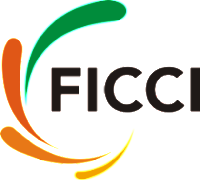
Indian Poly Vinyl industry is presently not doing well. Import of PVC, which was less than 5% of the country’s demand ten years ago, is now at almost 50% and is growing. The PVC industry also has a linkage to the Caustic soda industry. Majority of Chlorine produced goes into PVC manufacture, and if there is no PVC capacity addition, there can be no Caustic Soda capacity addition. As a result imports are increasing. That is not a healthy sign and has long term implications for national economy. To bring out the challenges and issues of the sector, a White Paper ‘Enhancing Competitiveness of Indian PVC & Caustic Soda Industries’ has been prepared by FICCI and Tata Strategic Management Group and was released by Shri Hansraj Gangaram Ahir, Misiter of State for Chemicals & Fertilizers, Govt. of India at a function in Federation House.
The PVC industry in India is valued at over Rs. 20,000 crores with five major producers and over 6,000 processors, employing tens of thousands of people, making consumer and industrial products. In spite of strong economic growth, India still has a long way to go to realize its infrastructural needs – nearly US$ 650 billion will be required for urban infrastructure in the next twenty years. Also, the construction sector contributes to 10% of the GDP. This provides great opportunity for investment and hence for PVC products that are used in these sectors. Despite the established importance and the rapid growth of PVC (Poly Vinyl Chloride) industry for national economy, investments are not happening.
The last greenfield investment for a PVC plant in India was conceived in the year 2002-03, when duty differential was a little over 15%. However, while demand has grown by almost 1.6 million tons no new capacity addition has even been envisaged. Indian import duties on PVC are lower than those in the developed world and in the ASEAN Region. Imports of PVC, which were less than 5% of the country’s demand ten years ago, are now at almost 50% and growing rapidly every year and are expected to reach to US$3 billion in few years. The forecasts for the PVC industry are bright. The global market, currently at US$ 56 billion, is expected to reach revenue of US$65 billion in 2019, with average annual demand expected to increase at 3.9%. The global consumption of PVC in 2014 was estimated at 40 million tons. The PVC industry in India has historically been driven by agriculture till 2000.
Thereafter, the main driver for PVC consumption has been infrastructure, for instance, Pipes & Fittings, that has grown to over 70% from 14% in 1975. Globally, Pipes & Fittings account for only 43% of the PVC consumption, showing that PVC applications in India other than Pipes & Fittings are primed for growth.
For the period between 2002 and 2015, the total demand for PVC in the country grew at a CAGR of 8.7%. During the same period domestic production capacity grew at a CAGR of 4.6 % whereas imports grew at a CAGR of 32.5%. Need for strengthening domestic PVC production Indian PVC demand in the future will mainly be driven by the Agriculture, Infrastructure, Housing and other sectors like FMCG, pharmaceutical and retail segments. The estimated annual growth for PVC will be at least 13% in the next five years, with demand expected to cross 5 million tons in 2020. India’s supply – demand imbalance in PVC means that the deficit in demand is met by imports. As seen earlier, for the 2002-2015 period , the total demand for PVC in the country grew at a CAGR of 8.7%. During the same period domestic production grew at a CAGR of 3.7 % whereas imports grew at a CAGR of 32.5%. By 2020, India would need approximately 3,700kt of imports i.e. an additional 2,300kt from the present level to meet its PVC demand. Such high levels of imports will also have a deleterious effect and the resultant net outflow of foreign exchange could be of the order of US $5 billion. Another factor that goes to show that this level of import is almost impossible is the estimated global trade in PVC resin by the year 2020 which is at around 10 million tons. It will again be not prudent for India to expect that almost 37% of this will be an inflow into the country.
Revitalising Indian PVC Industry:Some Suggested Measures
- Increase import duty of PVC & caustic soda from 7.5% to 10%. This will help revive the investment sentiment for the PVC industry in India.
- Reduce tariff on intermediates (EDC & VCM) to zero. As there is no local manufacture of EDC or VCM for merchant sale, any duty reduction will not adversely affect any domestic company.
- Revisit tariff concessions extended to countries with which India has signed Trade Agreements,
- Give thrust to the PCPIR policy, ensuring availability of ethylene for downstream units. Developed petrochemical infrastructure can greatly reduce logistics cost.
Conclusion: Close to 50% of the demand for PVC in the country is met by imports. When the country’s goal today is to ‘Make in India’, increased imports and lower manufacturing levels contribute to loss of potential employment and widening the current account deficit. All these measures can result in a potential investment of over Rs. 20,000 crores over the next 5-7 years.







Leave a Reply
You must be logged in to post a comment.